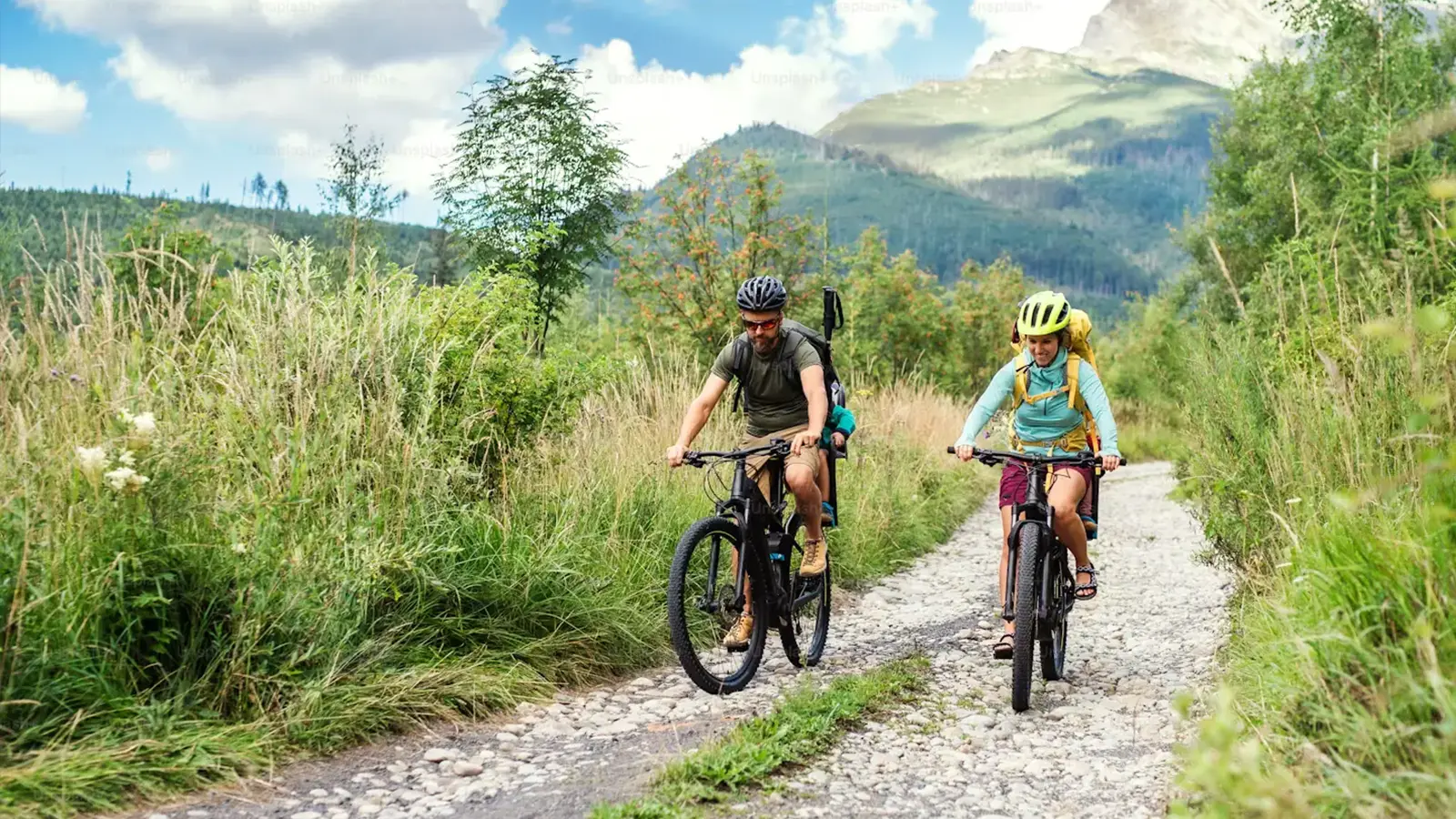Different Types of e-Bikes
Electric bikes come in a wide variety of shapes, sizes, and setups. Whether you’re commuting to work, hauling groceries, or just enjoying weekend rides, there’s an e-bike designed for your lifestyle.
This guide breaks down the main types of e-bikes available today, helping you compare features, performance, and practicality so you can choose the right one with confidence.
1. Commuter e-Bikes
Best for: Daily riders, urban dwellers, office workers
Commuter e-bikes are built for paved roads, bike lanes, and practical everyday use. They’re usually equipped with integrated lights, fenders, racks, and comfortable upright seating.
Key Features:
- Lightweight to moderate frame
- Efficient tires for road surfaces
- Integrated accessories for utility
- Often Class 1 or Class 3 (pedal assist)
Why it fits: Great for riders who need a fast, reliable alternative to cars or public transit.
2. Folding e-Bikes
Best for: Apartment dwellers, public transit users, travelers
Folding e-bikes collapse for easy storage or transport. Perfect if you have limited space, need to combine biking with public transportation, or want to bring your bike along on trips.
Key Features:
- Compact size with folding frame
- Small wheels (usually 16–20 inches)
- Moderate range
- Lightweight models available
Why it fits: Excellent for commuters with tight storage or those who travel frequently.
3. Cargo e-Bikes
Best for: Families, delivery riders, utility-focused users
Cargo e-bikes are the heavy-lifters of the e-bike world. Built with strong frames, extended wheelbases, and extra rack space, they’re ideal for carrying groceries, gear, or even kids.
Key Features:
- High-capacity frame and motor
- Long tail or front-loader cargo area
- Enhanced brakes and suspension
- Class 1 or 2, depending on local regulations
Why it fits: Ideal for replacing car trips, especially in dense urban areas.
4. Mountain and Trail e-Bikes
Best for: Off-road riders, fitness enthusiasts, weekend adventurers
Built for durability and performance, these e-bikes come with suspension systems, wide tires, and powerful mid-drive motors. They're capable of handling hills, gravel, and rugged terrain.
Key Features:
- Front (hardtail) or full suspension
- Mid-drive motors for climbing power
- Large-capacity batteries
- Often Class 1 for trail access compliance
Why it fits: Perfect for active riders who want to explore trails and nature.
5. Fat Tire e-Bikes
Best for: All-terrain riders, beachgoers, snow explorers
Fat tire e-bikes offer stability and grip on loose or slippery surfaces like sand and snow. Their oversized tires provide comfort and traction in varied conditions.
Key Features:
- 4-inch or wider tires
- Excellent balance and control
- Increased rolling resistance
- Heavy frame but stable ride
Why it fits: Ideal for adventurers or those living in seasonal climates.

6. Step-Through and Comfort e-Bikes
Best for: Casual riders, older adults, short-trip users
These bikes have a low or no top tube for easy mounting and dismounting. They often feature upright handlebars, cushioned seats, and suspension for smooth city riding.
Key Features:
- Step-through frame design
- Upright riding posture
- Emphasis on comfort
- Great for low-impact exercise
Why it fits: A great choice for riders focused on comfort and accessibility.
7. Performance Road e-Bikes
Best for: Cyclists looking to extend their range or reduce fatigue
Road-style e-bikes are lightweight and aerodynamic, built to go fast and far. They’re often used by cyclists who want to keep up with faster riders or go longer distances.
Key Features:
- Lightweight frames (often carbon or aluminum)
- Drop bars and narrow tires
- Integrated motors with torque sensors
- Limited accessories for minimal drag
Why it fits: Ideal for endurance riders and weekend cyclists who want a performance boost.
Final Thoughts
Each type of e-bike is built for a different kind of journey. The right one depends on how, where, and why you ride. Choosing based on lifestyle—not just specs—can make all the difference in your experience.
Ride On to the Next Chapter
Take your e-Bike know-how further:
← Go Back: e-Bike Buying and Ownership Tips
Discover Next: Understanding e-Bike Classes and Regulations →












